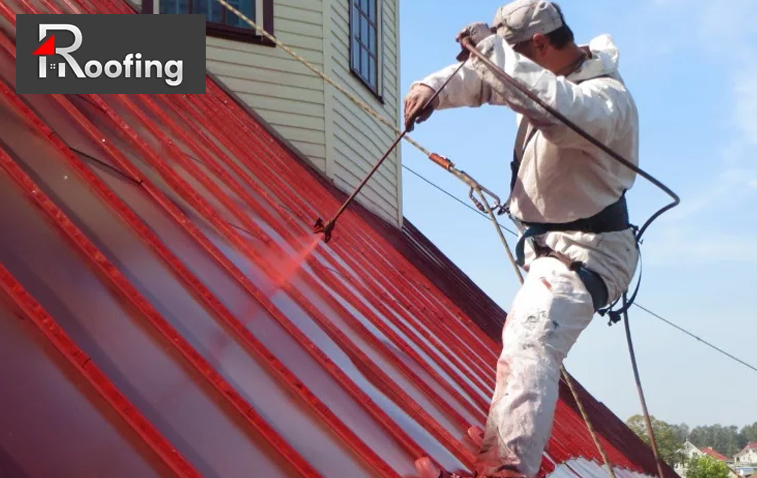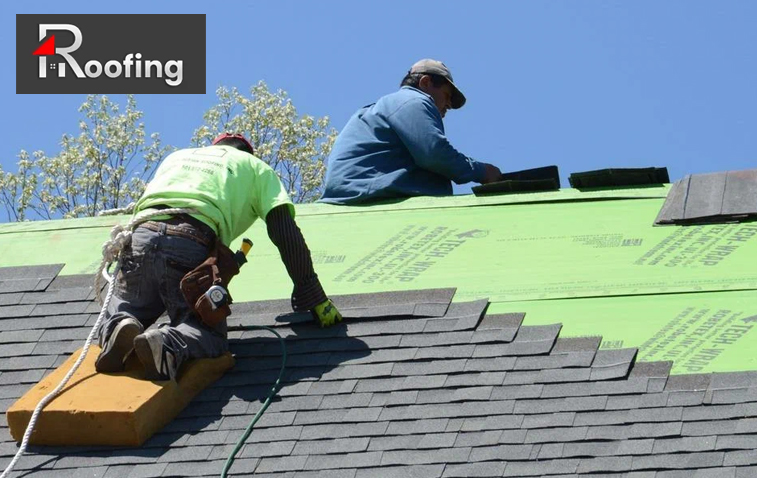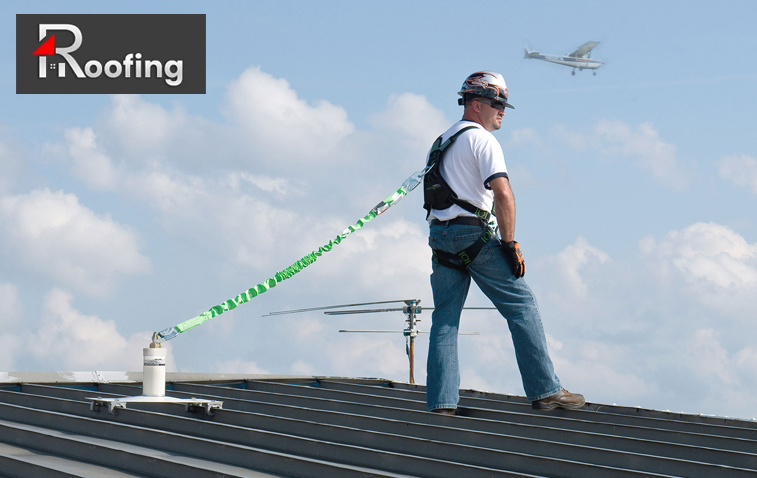Your home’s roof is more than just a protective covering; it’s a critical component that impacts your property’s aesthetics, energy efficiency, and overall structural integrity. Choosing the right roofing material and design involves careful consideration and planning. Here are five essential factors to keep in mind when planning for residential roofing to ensure that your choice meets your needs and stands the test of time.

Selecting the right material for your roof is a crucial decision that will affect its durability, appearance, and performance. Each material has its unique benefits and drawbacks, and understanding these can help you make an informed choice.
Asphalt shingles are the most common roofing material in residential construction. They are favored for their affordability, ease of installation, and a wide range of styles and colors. Asphalt shingles are relatively durable, with a lifespan of 20 to 30 years. They offer good fire resistance and are suitable for various architectural styles.
Metal roofing is known for its longevity and durability, often lasting 40 to 70 years. It is highly resistant to extreme weather conditions, including wind, rain, and snow. Metal roofs are also energy-efficient, reflecting solar radiant heat and helping to reduce cooling costs. They come in a variety of materials, including aluminum, steel, copper, and zinc, each offering different aesthetic and performance characteristics.
Wood shingles and shakes provide a natural, rustic look that is highly appealing for certain architectural styles. Cedar, redwood, and pine are common choices for wood roofing. While wood roofs offer good insulation properties and aesthetic appeal, they require regular maintenance to prevent issues like rot, mold, and insect infestation. They are also less fire-resistant unless treated with fire retardants.
Clay and concrete tiles are durable and can last over 50 years with proper maintenance. They offer excellent resistance to fire, wind, and pests. These tiles are particularly popular in Mediterranean, Spanish, and Southwestern-style homes. Clay tiles are heavier than most other roofing materials, so they require a strong roof structure to support their weight.
Slate is a premium roofing material known for its natural beauty and exceptional durability. A slate roof can last 75 to 100 years or more with minimal maintenance. Slate is highly resistant to fire, mold, and pests. However, it is one of the heaviest roofing materials and requires a very strong support structure. Slate is also one of the more expensive options.
The climate and weather patterns in your area play a significant role in determining the best roofing material for your home. Understanding how different materials perform under various weather conditions can help you make a more resilient choice.
In regions with high heat and sun exposure, it’s important to choose a roofing material that can reflect heat and withstand UV radiation. Metal and clay tiles are excellent options for hot climates as they reflect sunlight and help keep your home cooler. Lighter-colored asphalt shingles can also help reduce heat absorption.
For areas with heavy rainfall and high humidity, selecting a material that offers good water resistance and prevents mold growth is crucial. Metal, slate, and clay tiles are highly resistant to water and can effectively shed rain. Asphalt shingles can also perform well, especially if they have an algae-resistant coating.
In cold climates with significant snowfall, a roofing material that can handle the weight of snow and resist ice damage is essential. Metal roofing is particularly effective in shedding snow and preventing ice dams. Slate and certain types of asphalt shingles can also perform well in these conditions.
For regions prone to strong winds and storms, the roofing material must be durable and securely fastened. Metal roofing, with its strong wind resistance, is an excellent choice. Asphalt shingles rated for high wind resistance and impact-resistant tiles can also provide reliable protection.

The design and architecture of your home significantly influence your roofing options. The roof’s shape, pitch, and complexity all play a role in determining the most suitable materials and installation techniques.
The pitch, or slope, of your roof affects water drainage and the types of materials that can be used. Steeper roofs allow for better water runoff, reducing the risk of leaks and water damage. Materials like asphalt shingles, metal, and slate are suitable for various roof pitches. Flat or low-slope roofs require materials that provide excellent water resistance, such as modified bitumen or single-ply membranes.
Complex roof designs with multiple valleys, hips, and angles can impact the installation process and the choice of materials. More intricate designs may require additional flashing and waterproofing measures to ensure durability. Some materials, like metal and asphalt shingles, are more adaptable to complex roof structures.
Your home’s architectural style should also guide your roofing material selection. Traditional homes may benefit from the classic look of wood shingles or slate, while modern designs might be better suited to the sleek appearance of metal or the versatility of asphalt shingles. Ensuring that the roofing material complements your home’s overall aesthetic can enhance curb appeal and property value.
Energy efficiency is a critical consideration in today’s environmentally conscious world. Planning for residential roofing with the right material and design can significantly impact your home’s energy consumption and comfort levels.
Roofing materials with high reflectivity and thermal emissivity can help reduce heat absorption and lower cooling costs. Metal roofing and certain types of reflective asphalt shingles are effective at reflecting solar radiation. Clay and concrete tiles can also provide good thermal performance, especially when installed with an air gap underneath to improve ventilation.
Proper insulation beneath the roofing material is essential for maintaining a consistent indoor temperature and reducing energy costs. Insulation helps keep your home warm in the winter and cool in the summer. Materials like spray foam, rigid foam, and fiberglass batts can be used to insulate the roof deck and attic spaces effectively.
Adequate ventilation is crucial for preventing heat buildup and moisture accumulation in the attic. A well-ventilated roof can extend the lifespan of the roofing material and improve energy efficiency. Ridge vents, soffit vents, and gable vents are common solutions for ensuring proper airflow in the attic space.

The longevity and maintenance requirements of your roofing material are essential when planning for residential roofing. Investing in a durable material with low maintenance needs can save you time and money in the long run.
Different roofing materials have varying lifespans. Asphalt shingles typically last 20 to 30 years, while metal roofing can last 40 to 70 years. Slate and clay tiles offer exceptional longevity, often exceeding 50 years. When choosing a material, consider how long you plan to stay in your home and whether you want a long-term solution.
Some roofing materials require more maintenance than others. Wood shingles and shakes need regular treatment to prevent rot and insect damage. Asphalt shingles may need periodic inspections and minor repairs. Metal roofing and slate are relatively low-maintenance but should still be inspected for damage and cleaned periodically. Understanding the maintenance needs of your chosen material can help you plan for upkeep and ensure your roof remains in good condition.
Consider the ease of repairing and replacing your roofing material. Asphalt shingles and metal panels are generally easier to repair or replace compared to slate or clay tiles. If a section of the roof is damaged, being able to address the issue without extensive work can save time and reduce disruption to your household.
In conclusion, effective planning for residential roofing is crucial to ensuring a successful installation and long-term performance. By considering these five key factors, you can make informed decisions and achieve a durable, cost-effective roofing solution.
Improving energy efficiency can be achieved by selecting reflective roofing materials, ensuring proper insulation, and providing adequate ventilation. Materials like metal roofing and reflective asphalt shingles can help reduce heat absorption, while good insulation and ventilation maintain consistent indoor temperatures.
For high wind areas, metal roofing is an excellent choice due to its strong wind resistance. Impact-resistant asphalt shingles and certain types of tiles can also provide reliable protection against strong winds and storms. Ensure proper installation to maximize wind resistance.
It’s recommended to inspect your roof at least twice a year, in the spring and fall. Additionally, inspect your roof after severe weather events. Regular inspections can help identify and address minor issues before they become major problems, extending the lifespan of your roof.
In some cases, you can install a new roof over an existing one, but it depends on the condition of the current roof and local building codes. It’s important to ensure that the existing roof structure can support the additional weight and that there are no underlying issues that need to be addressed.

12 Roofing
12 Roofing brings together seasoned roofers and contractors to provide premier roofing solutions. Explore our comprehensive services and experience the exceptional quality and professionalism we offer.
Tile roofing is a classic choice for Burbank homeowners seeking […]
Have you ever imagined a roof that doesn’t just protect […]
Rain gutters plus are required in ensuring that water does […]
Speak with our in-house experts in residential roofing services for new ideas!
Copyright © 12 Roofing - 2025. All Rights Reserved.
